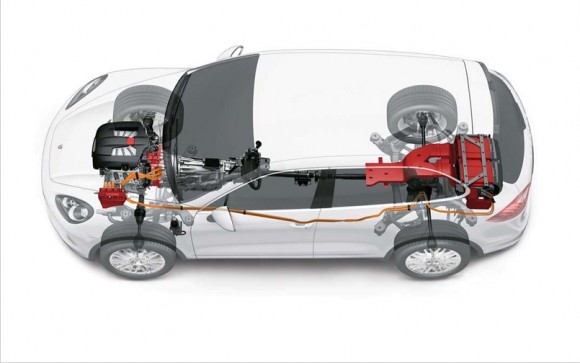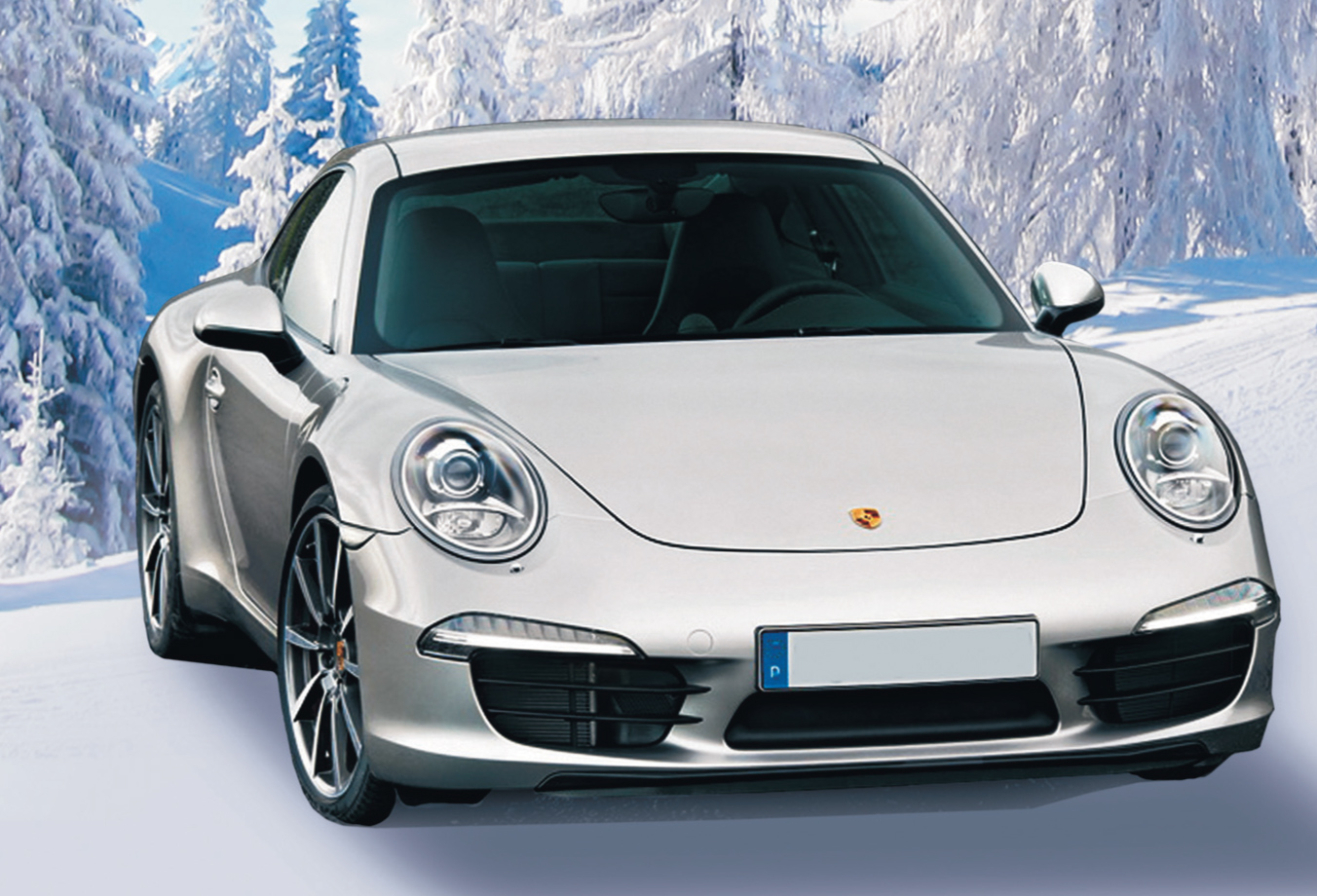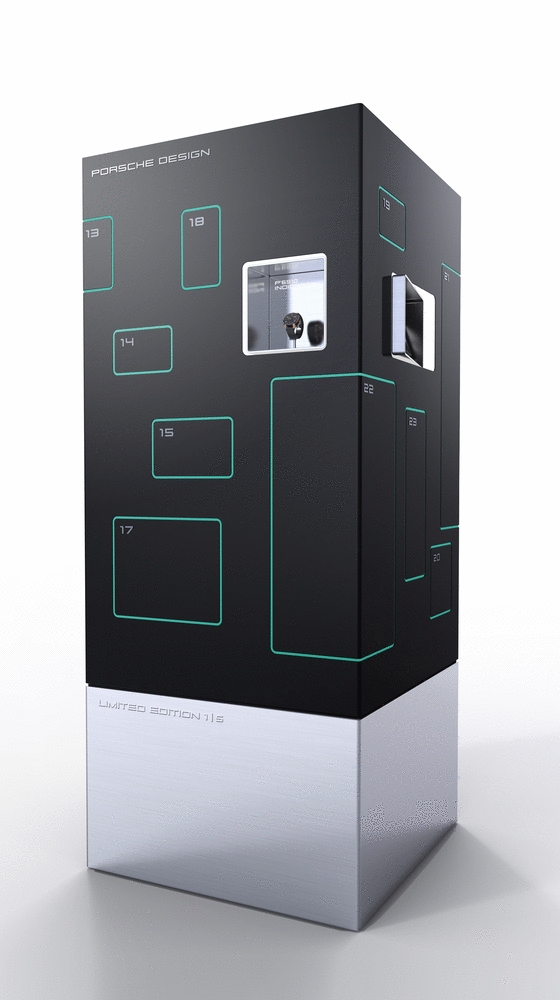[imagebrowser id=3]
2011 Porsche Cayenne Hybrid
For 2011, Porsche has released its second-generation Cayenne and has included a Hybrid version to the lineup. The Cayenne S Hybrid will be the first production Hybrid vehicle for Porsche. But if any brand should have a hybrid, it’s Porsche. The world’s very first hybrid is widely acknowledged to be the Lohner-Porsche of 1902, created by 27-year-old engineer Ferdinand Porsche, who later founded Porsche AG. The editors of 9 Magazine had the opportunity to spend some time with the new 2011 Cayenne S Hybrid and find out just how good it is.
At first look, the new Cayenne S Hybrid looks exactly like the Cayenne S. The only giveaway is the Hybrid badges on the fenders. But at closer look one could see subtle Hybrid specific accessories such as the thick red power cables that carry the high-voltage, the dash gauges and the Nickel Metal-Hydride (NiMH) battery pack that occupies the spare wheel recess of the trunk. This battery, which requires no maintenance, stores energy during driving. It’s a 176-pounds, and provides 288-Volts with a 34-kilowatt capacity and has a special cooling system cools the battery pack to below 40°C.
If you’ve never driven a hybrid, the Cayenne S Hybrid will be a whole new experience. Turn the ignition key and you get silence. Then the Hybrid moves off silently for short distances until the supercharged V6 kicks up and takes over. When stopped, the gas-powered engine shuts off and the vehicle becomes completely silent again until asked for more. A few miles into our drive of the Cayenne S Hybrid, we were already impressed with the hybrid system.

Not All Hybrids Are The Same
Porsche has opted for a particularly efficient, technically sophisticated concept which has never been implemented before: the parallel full hybrid. This is a hybrid with two powertrains that can operate independently or together. Its internal-combustion engine is a 333-hp, supercharged 3.0-liter V6 developing 324 lb-ft of torque from 3000 to 5250 rpm. The synchronous electric motor produces 47 hp and a whopping 221 lb-ft of torque up to 1150 rpm, making for a total output of 380 hp. The combined torque peak of 428 lb-ft comes only at 1000 rpm – because the torque of the electric motor diminishes as that of the V6 increases. Unlike a typical full hybrid model, in a parallel full hybrid system the electric motor is integrated into the drivetrain. The hybrid module sits between the transmission and the combustion engine where it docks to a decoupler. The heart and brain of the drive system is the Hybrid Manager: supplied with all the relevant information, it coordinates the combustion engine and electric motor to suit the current driving style. The TFT color display in the instrument cluster provides information on the current energy flow. Further driving data is displayed via the optional Porsche Communication Management (PCM).
Typical Porsche Performance
The new Cayenne S Hybrid offers all the advantages of a hybrid and all the performance of a Porsche. Its performance delivers a typical Porsche-like SUV experience with 0–60 mph in 6.1 seconds, 0–100 in 16.5 seconds, and a top speed of 150 mph. The straight-line performance is very good, with lots of torque and response. At full acceleration, we could not tell it was a hybrid whatsoever. However, one of the great benefits of the Cayenne S Hybrid is that it will ‘glide’ along the road without using the combustion engine – even at high speeds. This saves fuel and is rather odd when experienced for the first time. In relatively constant highway driving, the gas-powered engine shuts off, your tach goes to “0” or “Ready” and you are driving using just the electric motor alone. Mash the gas pedal and the combustion engine fires up and provides the power until your speed remains idol for a period again and the cycle repeats as necessary. You can also engage this mode manually with the E-Power button on the center console.
The new Cayenne S Hybrid weighs in at 4,938 Lbs. and the hybrid gear makes the Cayenne Hybrid 540 pounds heavier than a base 2011 Cayenne. The Cayenne S Hybrid is still relatively agile considering the additional weight added from the hybrid accessories. We found the steering to be very accurate and responsive. The brakes were responsive and reacted to the slightest touch. The new eight-speed automatic transmission is fast and seamless in its shifting and the gear ratios provided lots of torque off the line.
Like that in every Porsche, the new Cayenne S Hybrid interior exhibits the very highest standards of comfort and quality. The new console offers the highest level of ergonomic design and resembles that of the new Panamera. The Hybrid’s instrument cluster has a different gauge that includes E-Charge and the standard tachometer now has the words “Ready” at the zero mark.
Reduced Fuel Consumption and Emissions
The principle of “Porsche Intelligent Performance”: more power on less fuel, greater efficiency and lower CO2 emissions holds true here. Not surprisingly, the Cayenne S Hybrid is the most fuel-efficient in the Cayenne lineup returning an estimated 28.6Mpg. That won’t make the Cayenne S Hybrid a standout, but it will put Porsche on par with other hybrid SUVs currently on the market.
The new Cayenne S Hybrid is expected to arrive in North America later this month with a base price of $67,700. The Hybrid costs $5000 more than the 400bhp, V8-engined Cayenne S and the mere difference in price warrants the purchase of the Cayenne S Hybrid in our opinion. For Cayenne buyers who want to go green while retaining Porsche performance, the new Cayenne S Hybrid is certainly the way to go.
Photos: 9 Magazine
Illustration Courtesy Porsche, NA




